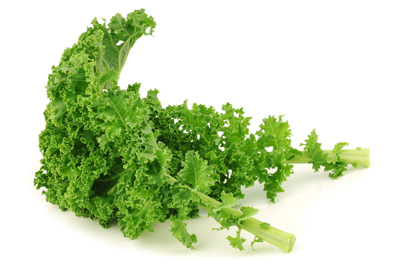
Health Benefits
Kale grows in many varieties, including tightly curled Vates and the red to purple-veined Red Russian. Red kale is sweet enough to eat raw, as is Tuscan and Lacinato kale. This low-calorie green is an excellent source of vitamins A, B6, and C and high in fiber, iron, and calcium. Our bodies absorb the calcium found in kale better than that found in spinach as its leaves contain less oxalic acid, a substance that can disrupt the absorption of the nutrients. The vitamin K in kale is essential for blood clotting and far surpasses broccoli, spinach, and Swiss Chard. It also contains unique nutrients that may help safeguard the eyes from macular degeneration and cataracts.
Buy
Choose deeply colored, crisp textured leaves that are free of blemishes or yellow spots. Avoid kale that appears wilted or limp.
Store
Store kale loosely in a plastic bag for up to two to three days in the refrigerator.
Prepare
Remove the thick woody stems using a pairing knife. Stack and roll the leaves and cut crosswise into thin ribbons. Braising or sauteing kale is best. Boiling will cause the loss of vital nutrients. The sweeter varieties of kale can be chopped and served raw in salad form. It would be best to massage the leaves in a small amount of healthy oil to soften them before serving. We suggest adding a little citrus juice, or apple cider vinegar, along with a variety of thinly cut veggies or dried fruit and nuts for a delicious salad.
Did you know?
In Scotland, the word kail once referred not only to the plant but to food in general, as it factored into most meals.
Read about the amazing health benefits of Lettuce.
